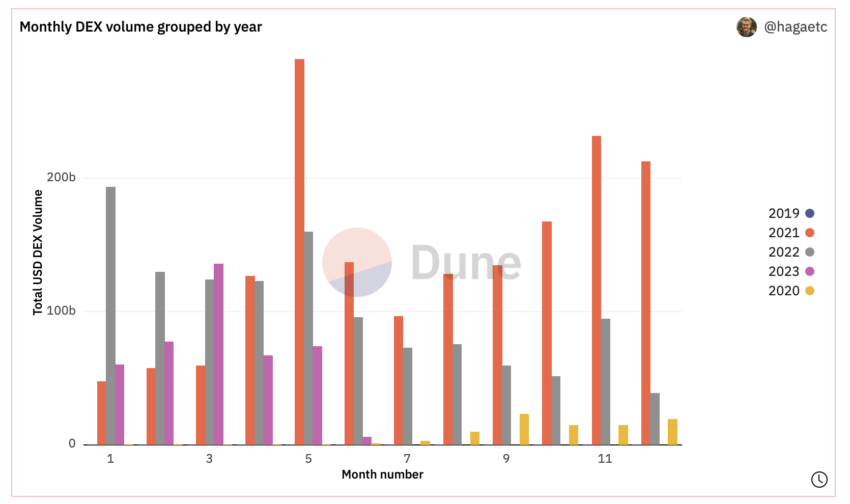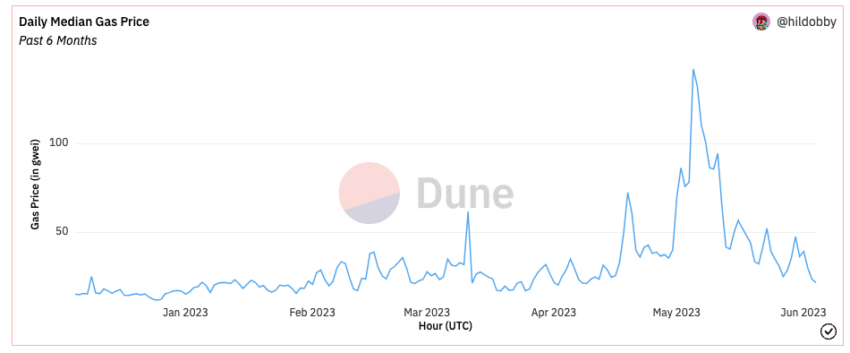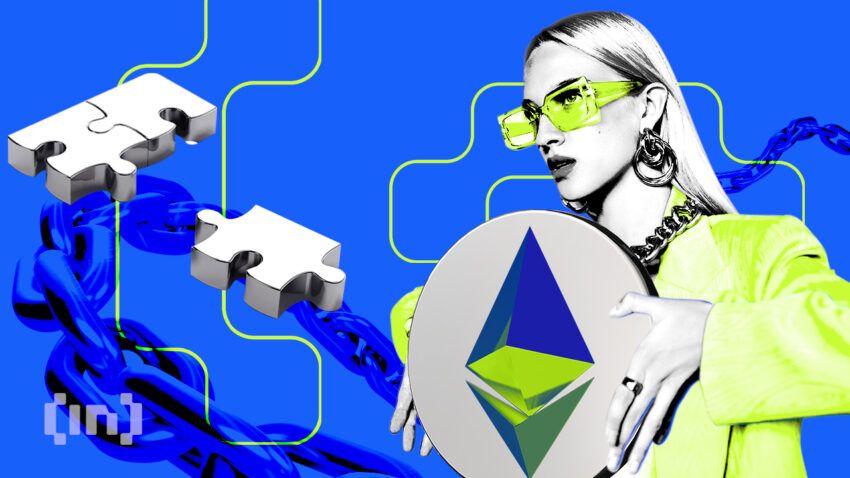The average transaction fee for Ethereum (ETH) has declined to $7.34 from $20 at the height of last month’s meme coin frenzy.
Decentralized exchange (DEX) volumes partially drove the surge in Ethereum fees while traders waited for centralized exchange listings.
DEX Meme Coin Volumes Drove Ethereum Fees in May
Uniswap recorded higher trading volumes than Coinbase in the first week of May. The decentralized exchange saw $1.2 billion compared with $948 million on Coinbase.
Combined DEX volumes rose to $74 billion in May from $67 billion the previous month, according to hagaetc’s Dune Analytics DEX volume dashboard.

The top 10 meme coins driving the rise in gas fees included wrapped ETH, Tether, TROLL, APED, and BOBO.
Gas prices rise during times of increased activity on the Ethereum blockchain. Maximum-Extractable Trading Value bots also contributed to the rise last month.
Most of the meme coin transaction activity occurred on Layer 2 networks Arbitrum, Optimism, and Polygon.
So-called Layer 2 blockchains attempt to reduce gas fees by performing computations off the main chain. Ethereum co-founder Vitalik Buterin alerted the community to bugs in the largest Layer 2s that could force validators to fork the main network.
Since the May peak, the daily median price of gas in gwei, or one billionth of 1 ETH, fell from 142 in May to 22 in June at press time.

Ethereum’s recent Shapella upgrade enabled withdrawals of ETH locked in a vesting contract on the Beacon Chain. Locked ETH entitles validators to a share of the rewards earned for securing the network.
Network activity after the upgrade resulted in more staking than withdrawals.
Dencun Will Improve Throughput Through Blob Transactions
Imminent Ethereum upgrades will include groundwork for increased transaction throughput.
The Dencun revision will implement the logic for a new transaction type with an extra “blob” of data that costs less than a similar amount of call data.
This “proto-danksharding” upgrade indirectly reduces gas fees by stacking a predetermined number of blob-carrying transactions in a single block.
A multidimensional fee market will vary transactions for blob-carrying transactions based on supply and demand. Blob data is only visible to the Beacon chain consensus layer and is deleted after thirty days.
Ethereum developer Dankrad Feist tested the number of blobs per block on Ethereum’s mainnet. He recommended the specifcation change to increase the number of blobs per block target to three to six, up from two to four.
Developers expect Dencun to roll out in the second half of 2023.
For BeInCrypto’s latest Bitcoin (BTC) analysis, click here.
Disclaimer
In adherence to the Trust Project guidelines, BeInCrypto is committed to unbiased, transparent reporting. This news article aims to provide accurate, timely information. However, readers are advised to verify facts independently and consult with a professional before making any decisions based on this content. Please note that our Terms and Conditions, Privacy Policy, and Disclaimers have been updated.


